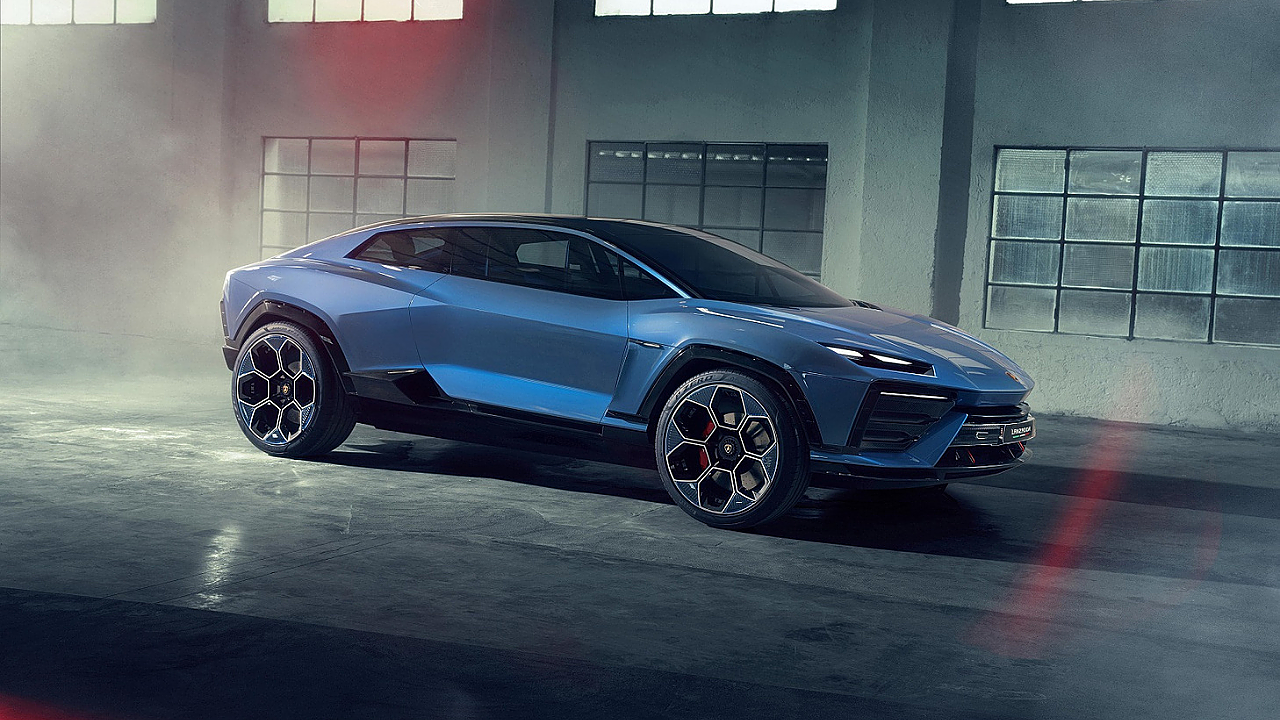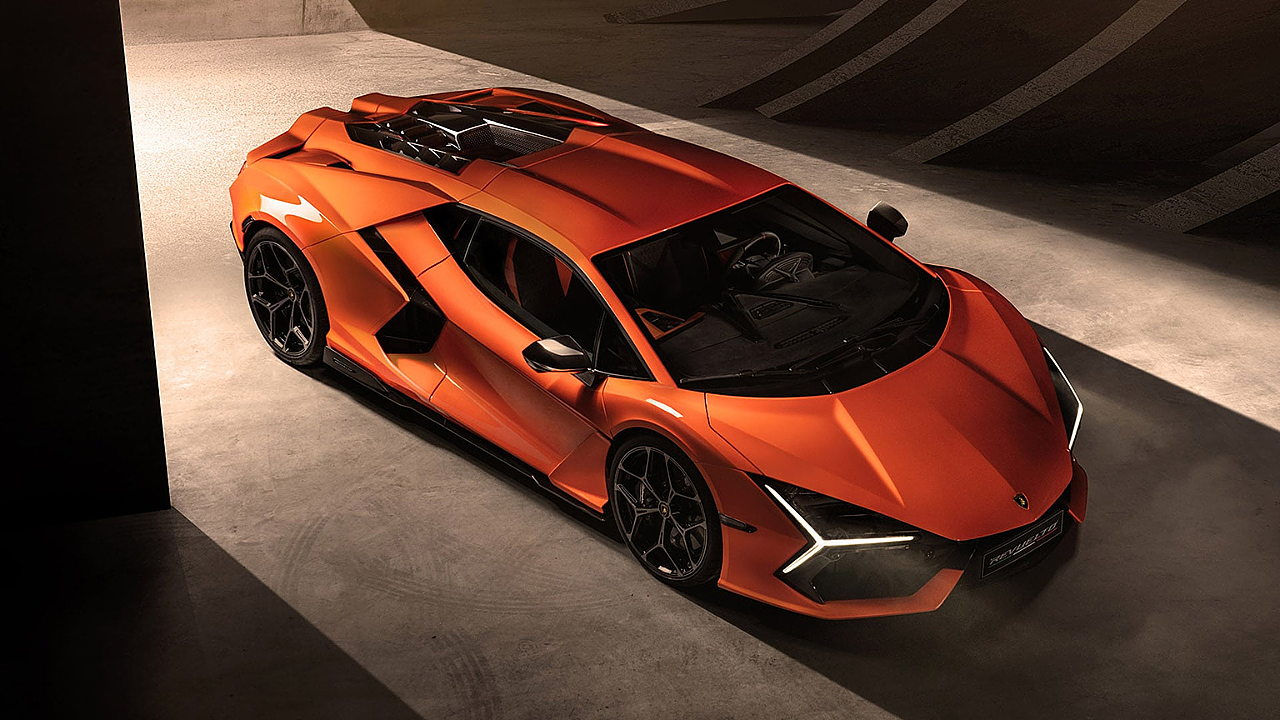
The theme of sustainability has captured every aspect of the world and mobility is the most captured of them all. While the introduction of EVs can be traced back to the early 1800s, the popularity of these silent machines started increasing in the 2010s.
While EVs have been considered a good fit for the mass segment and the luxury segment, supercar and sports car enthusiasts have always looked at EVs as an unworthy option. However, changing regulations around the world have even pushed supercar makers to be mindful of the global race of net zero emissions.
Under its “Direzione Cor Tauri” programme, Lamborghini now aims to walk along the road to decarbonisation of its future models and the continuing offsetting of CO2 emissions at the Sant’Agata Bolognese site based on a holistic approach for its environmental sustainability strategy.
The Cor Tauri roadmap represents a first step towards complete decarbonisation plan and it will consist of three phases:
- Celebration of the internal combustion engine (2021-2022)
- The transition to hybrid (by the end of 2024)
- First full electric Lamborghini (second half of the decade)
Sustained Efforts
Lamborghini has been focusing on sustainable production and the reduction of CO2 for years. Since 2015, the Sant'Agata Bolognese site with its 182,000 m2 of space has been operating as a certified CO2-neutral company. With the decarbonisation roadmap 'Direzione Cor Tauri' presented in October 2021, the company has committed to at least halving its CO2 emissions from 2025. Stephan Winkelmann, Chairman and CEO, Automobili Lamborghini at the time of the announcement said that 'Cor Tauri' is Latin and means bull's heart. At the same time, it is the name of the brightest star in the constellation of Taurus the bull, which shows Lamborghini the way to an electrified future, but one that remains true to the heart and soul of the brand.
While the company started off with its hybrid supercar journey with the Sian, Lamborghini recently unveiled its newest flagship offering the Revuelto, which replaces the Aventador and will be the Italian manufacturer’s first HPEV (High Performance Electrified Vehicle) hybrid super sports car.
A newly developed 6.5-litre V12 engine sits behind the passenger compartment of the Revuelto, and also makes use of three electric motors and a 3.8kWh lithium-ion battery, churning out a total of 1015 hp. Lamborghini says that the model has been sold out till 2026.

First EV Concept
Now in the next step, the Italian manufacturer has showcased its first EV offering concept in the form of Lanzador concept at the Monterey Car Week. The concept is a high ground-clearance GT with 2+2 seats.
The concept car describes new proportions and represents a new car segment: the Ultra GT, seen not only in the exterior but in the interior’s innovations, offering a new Lamborghini experience in terms of space and roominess.
The design of the GT concept car is inspired by spaceships. Mitja Borkert, Head of Design, Lamborghini, describes the start point of the design process from the volumes of a super sports car, but taking it onwards to create a true pilot’s driving position, inspired also by the Huracán Sterrato.
The concept car fits in with the Italian super sports company's 'Direzione Cor Tauri' strategy and its roadmap towards decarbonisation and electrification announced in 2021.
The Lanzador concept which gives a sneak peek into future Lamborghini EVs uses a high specific power electric motor on each axle ensuring permanent all-electric drive in every condition, surface and driving style and a peak power of over one megawatt.
Lamborghini believes that a key advantage of electric sports cars with two motors is the precise torque distribution for enhanced driving dynamics. In the Lamborghini concept, the control element calculates the necessary or desired torque for each axle individually within milliseconds, with the two motors differentiating and serving the left and right sides on the rear axle.
The all-wheel drive also offers active e-torque vectoring on the rear axle for particularly dynamic cornering behaviour, extremely finely tuned and adapted for every situation. The energy is provided by a new generation high-performance battery, which also ensures a long range.
Rouven Mohr, Chief Technical Officer, Lamborghini, said, “For us, electrification does not mean a restriction, but an intelligent opportunity to develop more performance and drivability.”
However, it is not only the hardware components that will define future electrified high-performance Lamborghini vehicles, but also the software and control systems. Mohr believes that Lamborghini will define and differentiate itself in the future through a strategy of all active-control systems.
“We are taking Lamborghini integrated driving dynamics control to a whole new level, which has not been possible for production sports cars before and offers our customers a completely new driving experience,' explains Mohr.
The CTO added that finding the right balance between power, performance, range and aerodynamics is certainly one of the biggest challenges during development, but challenge is a cornerstone within Lamborghini R&D.
The newly-developed Lamborghini Dinamica Veicolo Integrata (LDVI) driving dynamics control system sets a new benchmark for Lamborghini in both the concept car and future production vehicles.
Significantly, more sensors and actuators will be integrated into the LDVI in the future to create even finer and more precise driving behaviour, with crucial innovation not just in the hardware, but also in the control algorithm that manages the components: the more sensors and data fed to the control system, the more refined the algorithm is in delivering the nuances of driving sensations and feedback.
This allows the driving character to be more precisely differentiated to the individual driver than ever before: information delivered back to the driver by intelligent sensors positioned behind the new “pilot’s” glass panels mounted at the front of the car, giving a taste of future radar technology.
Additionally, Lamborghini’s future philosophy “Vision of Smart Aerodynamics” is highlighted in the concept car, with the aim of adapting Aero to each driving situation to be consistent with driver requests and range needs.
Inspired by Lamborghini super sports cars models, the newly-developed smart aerodynamics incorporates the ALA (Aerodinamica Lamborghini Attiva) system: the technology used in the Huracán Performante and Aventador SVJ, together with new active aero devices in the front and rear to ensure the best efficiency in the concept car’s Urban mode and the best downforce in Performance mode.
The future vision for Lamborghini’s ALA system blowing the diffuser is the evidence of the continuous disruptive improvement by Lamborghini R&D to achieve best aero efficiency and range extension.
The active aerodynamics system utilises the front air shutter and a movable splitter, which when deployed opens brake cooling ducts and cooling vanes to achieve the best performance. The S-Duct at the front, together with the concealed louvres for wheelhouse ventilation and the air curtain, improves downforce depending on the mode set: Efficient or Downforce.
With the air outlets, Lamborghini prevents the dynamic pressure in the wheel arches from lifting the front of the car at high speeds. The visually concealed louvres therefore provide downforce without creating additional drag. On the 23-inch wheels, the designers combine hexagonal elements with aeroblades to minimise turbulence at the wheels.
At the rear, depending on the drive mode, narrow airblades extend out of the sides and from the diffuser to improve aerodynamic downforce in conjunction with the flow-through rear blown spoiler. In Efficient mode, the laminar flow is against the body over the full length of the outer skin until it breaks off in a defined way at the rear, and the ALA system is fully functional to increase pressure recuperation to the back, significantly reducing drag and increasing efficiency.
Meanwhile, with the active chassis including a steerable rear axle and air suspension, the Lanzador tunes itself to every road situation or follows the previously defined setting of the driver's style, quickly and directly adjustable during the journey via the controls on the steering wheel.

Sustainable Interior
With the concept car, the designers transferred the company philosophy on sustainable materials to the interiors, which are pioneering while not conceding on look, feel, quality and durability. The concept car demonstrates the parameters of today’s technical possibilities and elevates Lamborghini to a new level of sustainability.
The interior is made almost entirely of sustainable materials, all made in Italy. While the high-end Merino wool (from a B Certified Italian company) dresses the dashboard, seats and door panels, the coloured thread is made of recycled material regenerated nylon/ recycled plastic and many non-visible plastics, such as the foam of the sports seats, are made of 3D-printed recycled fibres. Even the extensively integrated carbon, such as in the centre console and door panels, is made of regenerated carbon: a new, two-layer composite material.
The upholstery of the vehicle gets two options, sustainable leather and merino wool. Sustainable leather is leather that is tanned with special water in a particularly environmentally friendly way. The water comes from olive oil production and has to be treated in wastewater treatment plants due to its high acidity and antimicrobial and phytotoxic effect.
However, this residual water from olive oil production can also be reused by chemical manufacturers to produce tanning agents: the tanning process shares a “Made in Italy” synergy with the production of Italian olive oil.
Instead of artificially processed wool, Lamborghini uses wool from Australian Merino sheep. Every year, sheep grow a new fleece, making wool a completely renewable fibre, unlike synthetic fabrics, which are industrially produced from non-renewable fossil energy. It is imported to Europe once a year and by ship, which reduces the carbon footprint. The textile is then made by the only Italian fabric company who received the B-corporation certification. Merino wool is biodegradable, supple and soft to the touch.
Lamborghini uses a new type of synthetic yarn on many components of the concept car, which is partly made from recycled plastic recovered from the oceans: it is finely shredded, washed, dried, pressed under high pressure and processed into thin nylon threads. In the end, these threads end up as regenerated nylon on large rolls for the subsequent production of plastic parts.
The big advantage is that the material can always be reused and passes through the production cycle several times: a special kind of resource conservation, meaning that components can be produced without using up new resources. Compared to plastic parts made of petroleum, this is 80% more environmentally friendly.
Additionally, a significant aspect of sustainable production and resource saving lies in a new 3D printing process for plastics, such as the foam used in the sports seats. A new printing material for FDM (Fused Deposition Modelling) printing is made from recycled waste, such as used plastic bottles. It is a very versatile material and a stable, harmless plastic, ideal as a base material for 3D-printed seat foam due to its good mechanical, thermal and chemical resistance and its ability to be used elegantly and virtually invisible under seating fabrics.
The material can be recycled again after its useful life. The proportion of recycled material can be between 45 and 100 percent, depending on the origin of the waste.
Road Ahead
'Lamborghini's electrification plan is a change of course made inevitable by a radically changed context. We want to make our contribution with it and reduce our environmental impact more and more through concrete projects,' Winkelmann said.
Lamborghini plans to electrify its entire product range by the end of 2024: the company is investing more than € 1.9 billion over four years for the conversion to hybrid technology, the largest investment in the history of the Italian brand.
The concept for the fourth model is not just a technical demonstrator but also a refined ‘laboratory on wheels’ in terms of sustainable materials. The production version of the concept car will be launched in 2028. It will innately maintain the brand's DNA and elevate Lamborghini's 60-plus years of tradition into a new decade, the company believes.
The fourth model concept stands for design, performance and the answer to the question of where Lamborghini is heading in the future. 'For us, the fourth model is the absolutely logical extension of the existing portfolio - the perfect link between Urus and our super sports cars,' says Winkelmann.
With the new, fourth model series, Lamborghini will in future offer the perfect portfolio incorporating emotive super sports cars with hybrid engines, and the next Urus generation with plug-in hybrid.
The Lanzador is not a whim of designers and engineers: it provides a concrete preview of the production vehicle that Lamborghini will present in 2028. The series production car based on the fourth model concept will be built in Sant'Agata Bolognese and, to this end, Lamborghini is planning to expand the site and hire additional employees.
Also Watch
There is still a stigma around buying super luxury cars in India: Sharad Agarwal, Lamborghini India